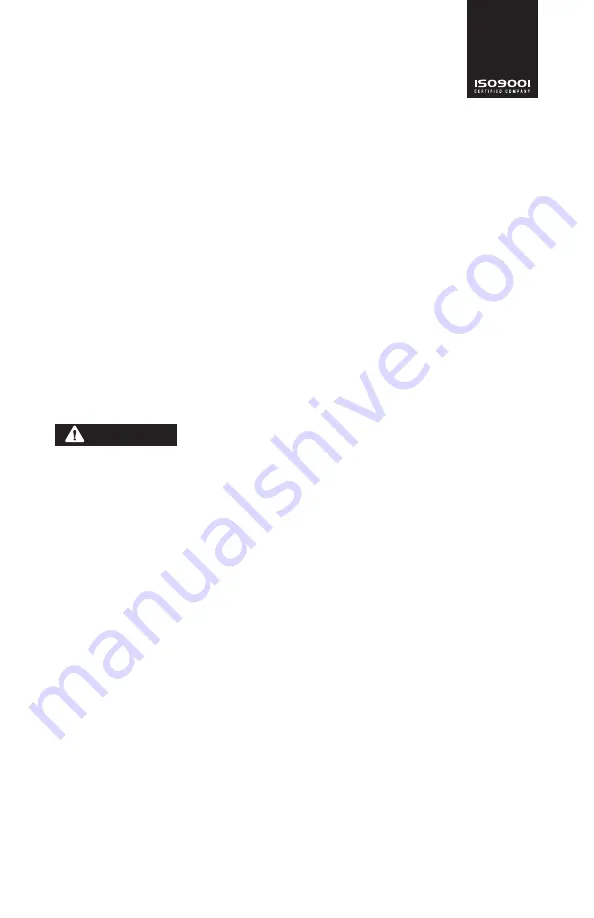
5
AIR SOURCE, FITTINGS, AND PRESSURE
AIR SOURCE
Locate the air source in a clean air environment. Make sure the air source is somewhere that
vehicles, forklifts, and other machinery are not running near the air inlet, as this will cause
carbon monoxide to be drawn into your air supply.
The Air supplied to the Radex
®
Airline Filter should not exceed 140 degrees Fahrenheit (60
degrees Celsius). When an oil lubricated air compressor is used and it gets excessively hot, it
can potentially create Carbon Monoxide.
Do not connect the Radex
®
’s air supply hose to nitrogen, toxic gases,
inert gases or other non-breathable air sources. Check the air source
before using the airline filter. This apparatus is not designed for use with mobile air supply
systems i.e. cylinders or ambient air pumps. Failure to connect the supply hose to the proper air
source could result in serious injury or death.
ADDITIONAL EQUIPMENT
Always use suitable aftercoolers/dryers. Refer to the compressor manufacturer/instruction
manual for recommendations on setting up the compressor for breathing air and for suitable
in-line air-purifying sorbent beds and filters. The compressor filters and oil level should be
checked daily and changed during regular scheduled maintenance or when contaminated.
REQUIRED AIR QUALITY MONITORING
Air quality must be tested at the time of initial setup from the point of attachment (the
Radex
®
Airline Filter outlet to the respirator).
Breathing air quality should continuously monitored and/or be tested for at least the
following air components (check your local standards for requirements, see page 4):
O2 - Oxygen
CO2 - Carbon Dioxide
CO - Carbon Monoxide
H2O - Water (Moisture Content)
Hydrocarbons (Oil Mist)
Total Particulates
Retesting the air quality is recommended If the compressor is moved or should the
compressor location or environment significantly change.
DANGER
Federal OSHA 29 CFR 1910.134 “Compressor Operations for Breathing Air”
Army Corps of Engineers EM385-1-1, Section 30.F.04.
EN 12021 :2014 Respiratory equipment. Compressed gases for breathing apparatus.
AS/NZS 1715:2009 Selection, use and maintenance of respiratory protective equipment.






































